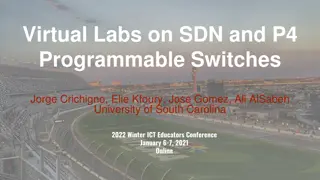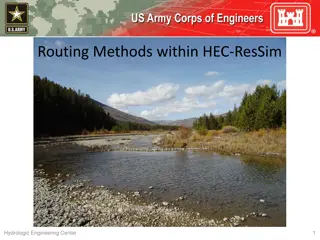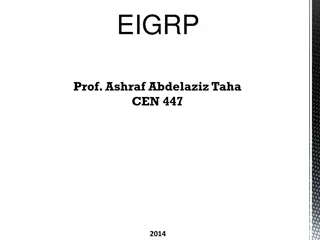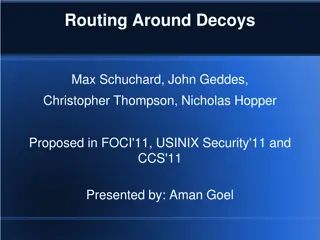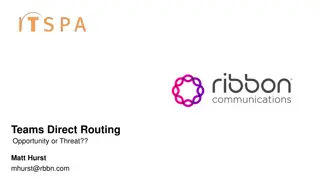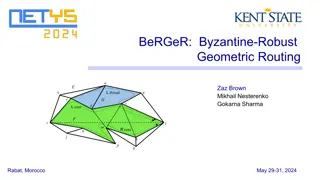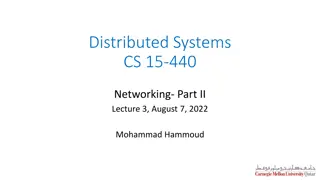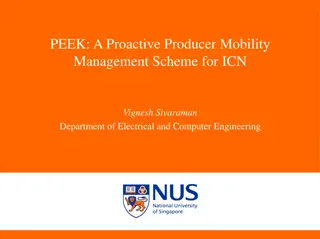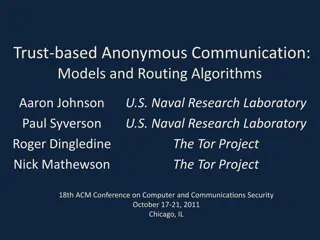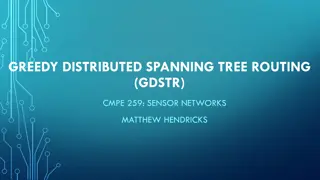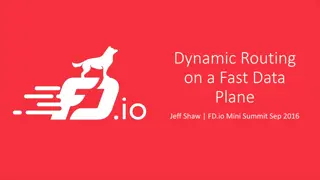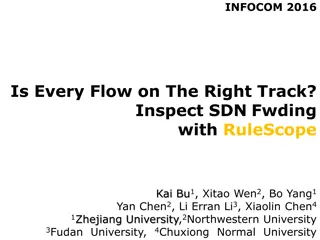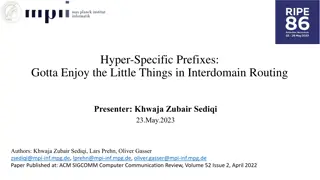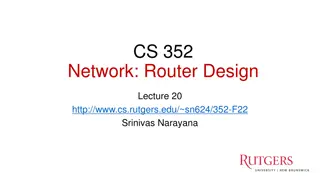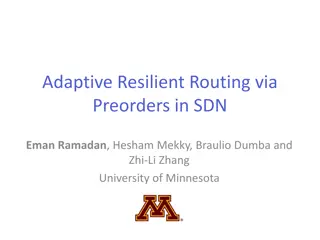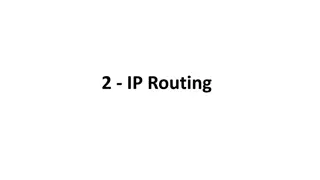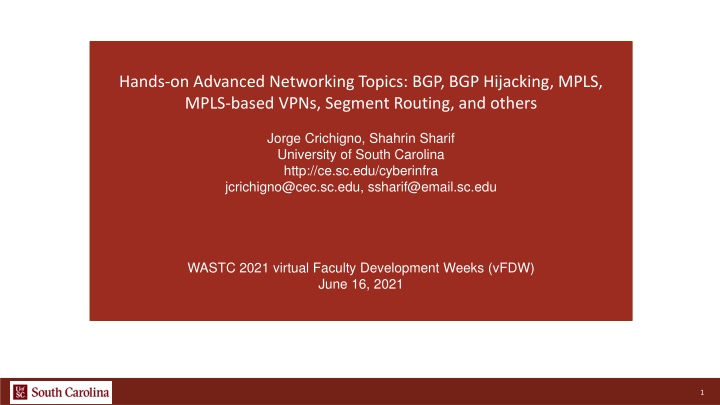
Hands-On Advanced Networking with BGP, MPLS, and VRF Implementation
Explore advanced networking topics such as BGP, BGP hijacking, MPLS, MPLS-based VPNs, and Segment Routing through a practical approach. Learn about VRF technology, its advantages, and implementation for creating separate routing tables within the same router. Dive into lab exercises on Virtual Routing and Forwarding (VRF) to understand its application in creating separate Virtual Private Networks (VPNs) for Internet Service Providers (ISPs) and organizations.
Download Presentation

Please find below an Image/Link to download the presentation.
The content on the website is provided AS IS for your information and personal use only. It may not be sold, licensed, or shared on other websites without obtaining consent from the author. If you encounter any issues during the download, it is possible that the publisher has removed the file from their server.
You are allowed to download the files provided on this website for personal or commercial use, subject to the condition that they are used lawfully. All files are the property of their respective owners.
The content on the website is provided AS IS for your information and personal use only. It may not be sold, licensed, or shared on other websites without obtaining consent from the author.
E N D
Presentation Transcript
Hands-on Advanced Networking Topics: BGP, BGP Hijacking, MPLS, MPLS-based VPNs, Segment Routing, and others Jorge Crichigno, Shahrin Sharif University of South Carolina http://ce.sc.edu/cyberinfra jcrichigno@cec.sc.edu, ssharif@email.sc.edu WASTC 2021 virtual Faculty Development Weeks (vFDW) June 16, 2021 1
Introduction to VRF VRF is a technology that allows multiple instances of a routing table to co-exist within the same router at the same time An interface cannot belong to more than one VRF at a time It is commonly used by Internet Service Providers (ISPs) to create separate Virtual Private Networks (VPNs) for customers 3
VRF Advantages VRF saves resources by eliminating the need for extra physical routers It allows overlapping Ip addresses since the routing instances are separated for each VRF It is useful when there is a requirement to segregate different application (i.e., voice, video, data) VRF increases network functionality because network paths can be segmented without requiring multiple routers 4
Create VRF Create VRF for each organization 192.168.2.0/24 192.168.1.0/24 Org 1 Org 1 Campus 1 Campus 2 r4 r2 r5 r3 r1 Org 2 Org 2 Campus 2 Campus 1 192.168.3.0/24 192.168.4.0/24 5
Create VRF Assign a VRF for each interface to create separate routing tables 192.168.2.0/24 192.168.1.0/24 Org 1 Org 1 Campus 1 Campus 2 r4 r2 Interface VRF r5 r3 r1 r1-eth0 org1 Org 2 r1-eth2 org1 Org 2 Campus 2 Campus 1 r1-eth1 org2 192.168.3.0/24 192.168.4.0/24 r1-eth3 org2 6
Lab topology Two organizations (org1 and org2) are connected to the ISP Each organization has two sites (campus 1 and campus 2) Initially all the routers/end-hosts can communicate with each other After configuring VRF, router r1 creates a separate routing table for each organization h4 .10 h2 .10 h2 h4-eth0 h2-eth0 Org 1 Org 1 s4-eth1 s2-eth1 192.168.2.0/24 192.168.4.0/24 Campus 2 s4 s2 s2 Campus 1 s4-eth2 s2-eth2 r4-eth0 r2-eth0 r2 r4 r1 ISP r3 r3-eth0 r5 r5-eth0 Org 2 Org 2 s3-eth2 s5-eth2 192.168.3.0/24 Campus 1 192.168.5.0/24 s2 s3 s2 s5 Campus 2 s3-eth1 s5-eth1 h3-eth0 h5-eth0 h3 .10 .10 h5 7
Lab configuration Routing table for org1 h4 .10 h2 .10 h2 h4-eth0 h2-eth0 Org 1 Org 1 s4-eth1 s2-eth1 192.168.2.0/24 192.168.4.0/24 Campus 2 s4 s2 s2 Campus 1 s4-eth2 s2-eth2 r4-eth0 r2-eth0 r2 r4 r1 Routing table for org2 ISP r3 r3-eth0 r5 r5-eth0 Org 2 Org 2 s3-eth2 s5-eth2 192.168.3.0/24 Campus 1 192.168.5.0/24 s2 s3 s2 s5 Campus 2 s3-eth1 s5-eth1 h3-eth0 h5-eth0 h3 .10 .10 h5 8

